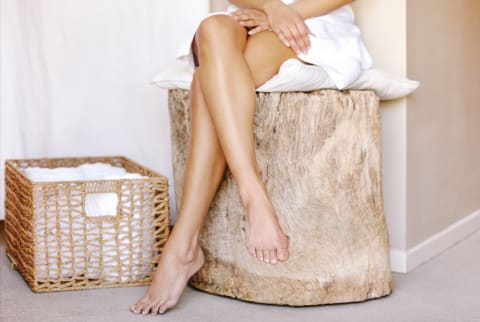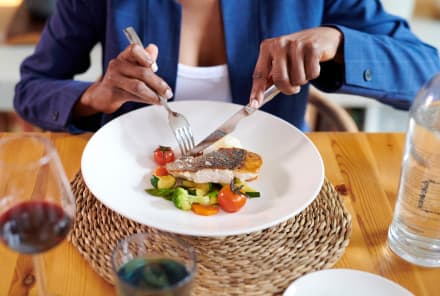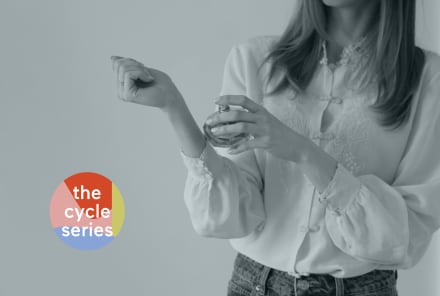Advertisement
I'm A Holistic Podiatrist & This Is Why I'm A Proponent Of Natural Remedies For Foot Pain


It is extremely common in the world of foot and ankle problems, as well as many other specialties, to address these issues with inflammation-suppressant medications (i.e., cortisone and nonsteroidal anti-inflammatory drugs, or NSAIDs). When in the throes of suffering from this type of pain, those medications sound great, and in some cases can be effective. However, in my experience as a holistic podiatrist, I think it's important to understand the possible downsides of this approach and keep other alternatives in mind.
Potential risks of anti-inflammatory treatments.
Suppose you decide to take up walking for exercise. You generally feel fine doing so, until one day you notice pain in the heel. The pain may teeter back and forth between manageable, nonexistent, and piercing. These symptoms point toward plantar fasciitis, an inflammation of the ligament that supports the arch of the foot.
A standard treatment would be a cortisone injection and a prescription for an NSAID. Though both of these treatments can provide relief from inflammatory pain by suppressing chronic inflammation, they're not necessarily helpful long term.
Remember, chronic inflammation is a pathway that protects what isn't readily being repaired. When your body is in pain, you are forced to stop doing what caused the problem (in this case, walking), rest the injured part, and compensate by putting more weight on the other limb—hopefully giving your immune system a chance to heal the problem.
When taking medication, though, the injury remains the same, but the brain is no longer getting the pain signal. In other words, the injured body part is no longer protected. Assuming the problem is solved, many people will continue to use (or overuse) an injured foot, preventing it from repairing, and potentially leading to further injury.
While these medications may not always be harmful, instead, I recommend working with your doctor or podiatrist to find the best natural treatment for you.
Natural remedies for foot pain.
After working to overcome the functional and metabolic causes of chronic pain and inflammation, we can push the body to heal, gently or aggressively. Here are a few treatments I recommend:
Homeopathic injections
The gentlest approach is to use homeopathic injections1. These natural medicines are derived from mostly plant and mineral sources. In high doses they would be toxic, but homeopathic medicines are extremely diluted and harmless. (Just make sure you're working with a doctor you trust.)
When injected into an area, these injectables elicit a detoxification response. In essence, they trick the body into addressing a new problem with primary inflammation, so it will then release the protective chronic inflammation.
Prolotherapy injections
A bit more aggressive, but still natural, are prolotherapy injections2. These injections irritate cell membranes, causing low-level tissue injury. This fosters the migration of fibroblasts, which lay down a collagen network, thereby fortifying injured and inflamed tendons, ligaments, and joint capsules.
Platelet-rich plasma injections (PRP)
Another technique is platelet-rich plasma injection (PRP), which utilizes the patient's own platelets3 by drawing blood.
Platelets are high in growth factors and enzymes that foster repair. This technique can cause a temporary worsening of symptoms as the body's first response is to protect what it believes to be a sudden injury. It usually subsides within days or a week.
All of these techniques are supported by dietary changes, lifestyle adjustments, and nutritional and/or herbal medicines that are all designed to foster healing.
Watch Next
Enjoy some of our favorite clips from classes
Enjoy some of our favorite clips from classes
What Is Meditation?
Mindfulness/Spirituality | Light Watkins
Box Breathing
Mindfulness/Spirituality | Gwen Dittmar
What Breathwork Can Address
Mindfulness/Spirituality | Gwen Dittmar
The 8 Limbs of Yoga - What is Asana?
Yoga | Caley Alyssa
Two Standing Postures to Open Up Tight Hips
Yoga | Caley Alyssa
How Plants Can Optimize Athletic Performance
Nutrition | Rich Roll
What to Eat Before a Workout
Nutrition | Rich Roll
How Ayurveda Helps Us Navigate Modern Life
Nutrition | Sahara Rose
Messages About Love & Relationships
Love & Relationships | Esther Perel
Love Languages
Love & Relationships | Esther Perel
What Is Meditation?
Box Breathing
What Breathwork Can Address
The 8 Limbs of Yoga - What is Asana?
Two Standing Postures to Open Up Tight Hips
How Plants Can Optimize Athletic Performance
What to Eat Before a Workout
How Ayurveda Helps Us Navigate Modern Life
Messages About Love & Relationships
Love Languages
Advertisement

This Type Of Fat Is Vital For Women's Health — Are You Getting Enough?
Molly Knudsen, M.S., RDN

New Study Confirms The 3 Habits That Age Your Brain Faster
Molly Knudsen, M.S., RDN

This Type Of Fat Is Vital For Women's Health — Are You Getting Enough?
Molly Knudsen, M.S., RDN

New Study Confirms The 3 Habits That Age Your Brain Faster
Molly Knudsen, M.S., RDN













